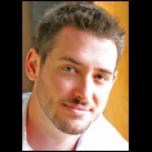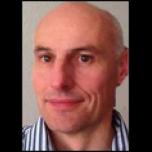Past Webinar
International Student Workshop on AD
Quick Links
Introduction
What makes a good grant proposal in Alzheimer’s research? How to develop and present it? What are funders looking for? Students from all over the world learned the answers by working hands-on with established Alzheimer’s disease researchers at a workshop held in advance of the Society for Neuroscience meeting. Co-organized by the International Foundation Alzheimer's Research (ISAO) in Elsloo and the European Graduate School of Neuroscience in Maastricht, both in the Netherlands, with the American Health Assistance Foundation in Clarksburg, Maryland, the workshop, titled “Emerging Concepts in Alzheimer Research,” was held 10-12 October in New Orleans, Louisiana.
Students and scientists who were at the meeting re-created the mock grant proposal session highlighted in their three-day program. Three students presented their groups’ projects; then, the principal investigators pointed out the strengths of each, how to improve, and what makes a project attractive to funders in general.
Resources mentioned during the Webinar:
- Stephen W. Russell, D.V.M., Ph.D., and David C. Morrison, Ph.D. The Grant Application Writer’s Workbook (2010)
- Your First Proposal—Useful Information on Submitting Proposals
- Listen to the Webinar.
- Rylan Allemang-Grand's Presentation
- Julie Savage's Presentation
- Edward Wilson's Presentation
Background
Background Text
by Gwyneth Dickey Zakaib
A few days before this year’s Society for Neuroscience 42nd annual meeting in New Orleans, Louisiana, about 20 students and 15 researchers gathered for a unique type of workshop. For three days, they rubbed elbows over meals, shared lectures, and presented snippets of data as a way of exchanging ideas between budding and established scientists across the disciplines of Alzheimer’s study—from neuroinflammation and lipid metabolism to stress and the blood-brain barrier. In this mixing bowl of Alzheimer’s science, concepts flew back and forth as both students and researchers connected dots they may not have seen before.
“I got ideas here that I never would have come up with on my own—ideas that I’m ready to take back to the lab and try at the bench,” said Julie Savage, a Ph.D. student in Gary Landreth’s lab at Case Western Reserve University, Cleveland, Ohio.
The groundwork for these ideas came from researchers’ lectures summarizing current knowledge in their specific disciplines—epigenetics, diabetes, or energy metabolism, for example. Scientists then raised pressing questions in their fields and addressed how future research might tackle them. Students and post-docs presented five-minute overviews of their research goals, scientific role models, and even their hometowns as a way for everyone to get to know one another.
The real work came later in the evening. After a day of presentations, the students split into four groups, each of which designed a project to address an unknown question in the field. This could be either something they garnered from the lectures or thought up based on the day’s discussions, or their own experience. Huddled over their laptops, students boned up on literature, batted around ideas on protocols, and deliberated about the costs of various research models or types of labor. All the while, they tapped into their respective expertise to come up with a collaborative approach.
On the final day, the four student groups presented their projects in a grant proposal simulation. The exercise gave students a chance to field constructive criticism from their seniors. Some light-hearted banter punctuated a mostly serious, substantive discussion. The presenters each vied for a (fictitious—sorry!) $500,000 grant, and experts deliberated over which group deserved it most.
Three of the four groups presented at this Webinar. Their projects included 1) a multi-target immunization approach to AD therapy in mice, 2) development of an Aβ oligomer-detecting ligand for positron emission tomography, and 3) comparing epigenetic changes from a stressful and an enriched environment.
References
External Citations
Further Reading
Papers
- Inoue K, Nakada K, Ogura A, Isobe K, Goto Y, Nonaka I, Hayashi JI. Generation of mice with mitochondrial dysfunction by introducing mouse mtDNA carrying a deletion into zygotes. Nat Genet. 2000 Oct;26(2):176-81. PubMed.
- Trautmann A, Vivier E. Immunology. Agrin--a bridge between the nervous and immune systems. Science. 2001 Jun 1;292(5522):1667-8. PubMed.
Panelists
-
 Rylan Allemang-Grand
University of Toronto
Rylan Allemang-Grand
University of Toronto
-
Julie Savage Case Western Reserve University School of Medicine
-
Edward Wilson, PhD Stanford School of Medicine
-
William Klein, PhD Northwestern University Institute for Neuroscience
-
Cynthia Lemere, M.S., Ph.D. Ann Romney Center for Neurologic Diseases, Brigham and Women's Hospital and Harvard Medical School
-
 Jochen Walter, Ph.D.
University of Bonn
Jochen Walter, Ph.D.
University of Bonn

Comments
No Available Comments
Make a Comment
To make a comment you must login or register.